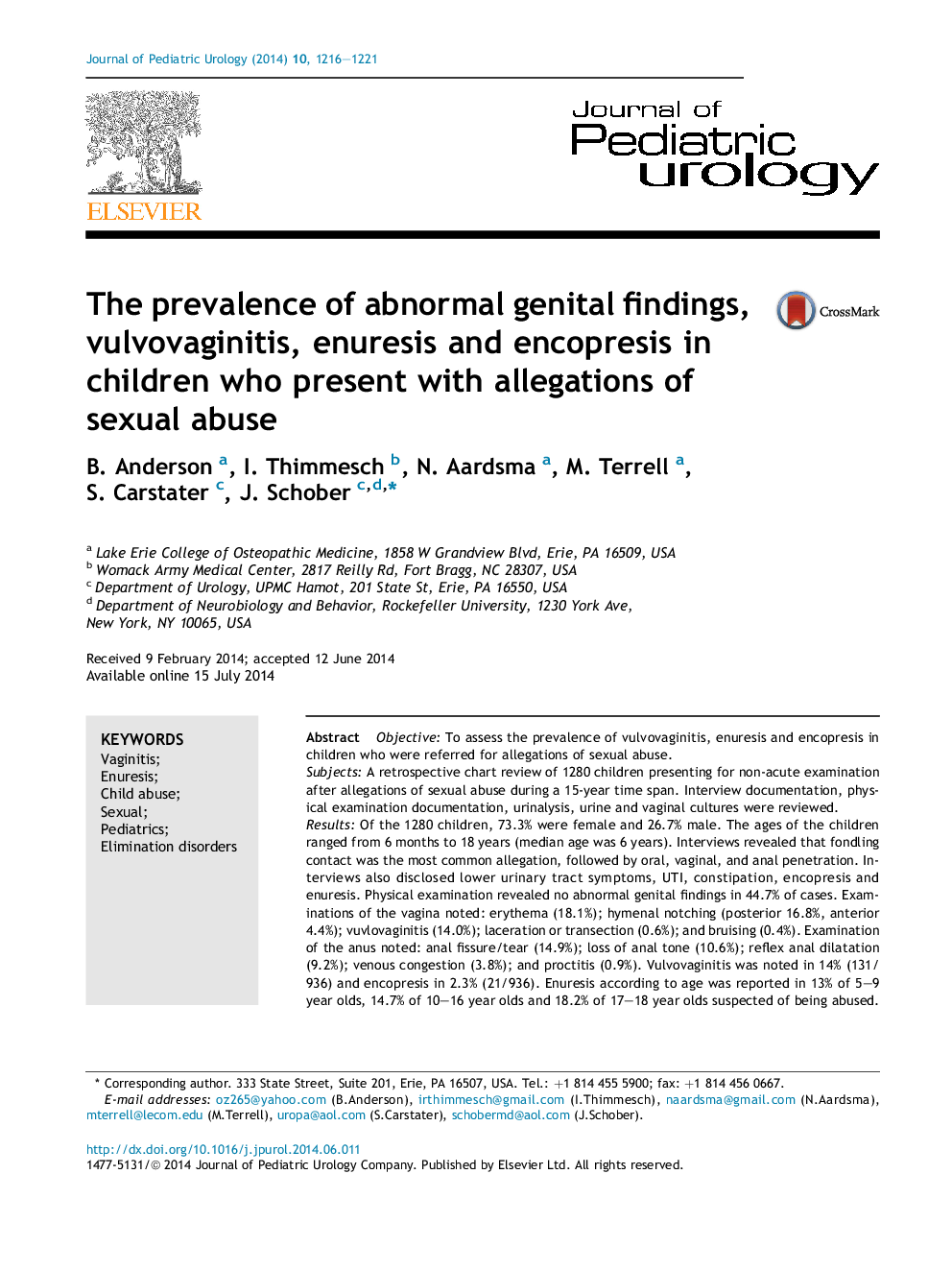| Article ID | Journal | Published Year | Pages | File Type |
|---|---|---|---|---|
| 6218392 | Journal of Pediatric Urology | 2014 | 6 Pages |
ObjectiveTo assess the prevalence of vulvovaginitis, enuresis and encopresis in children who were referred for allegations of sexual abuse.SubjectsA retrospective chart review of 1280 children presenting for non-acute examination after allegations of sexual abuse during a 15-year time span. Interview documentation, physical examination documentation, urinalysis, urine and vaginal cultures were reviewed.ResultsOf the 1280 children, 73.3% were female and 26.7% male. The ages of the children ranged from 6 months to 18 years (median age was 6 years). Interviews revealed that fondling contact was the most common allegation, followed by oral, vaginal, and anal penetration. Interviews also disclosed lower urinary tract symptoms, UTI, constipation, encopresis and enuresis. Physical examination revealed no abnormal genital findings in 44.7% of cases. Examinations of the vagina noted: erythema (18.1%); hymenal notching (posterior 16.8%, anterior 4.4%); vuvlovaginitis (14.0%); laceration or transection (0.6%); and bruising (0.4%). Examination of the anus noted: anal fissure/tear (14.9%); loss of anal tone (10.6%); reflex anal dilatation (9.2%); venous congestion (3.8%); and proctitis (0.9%). Vulvovaginitis was noted in 14% (131/936) and encopresis in 2.3% (21/936). Enuresis according to age was reported in 13% of 5-9 year olds, 14.7% of 10-16 year olds and 18.2% of 17-18 year olds suspected of being abused.ConclusionPrevalence of vulvovaginitis and enuresis were increased, and encopresis was decreased in children with allegations of sexual abuse when compared to the general pediatric population. Physicians should continue to be aware of the possibility of the presence of these conditions in children who have been sexually abused, and offer appropriate treatment.
